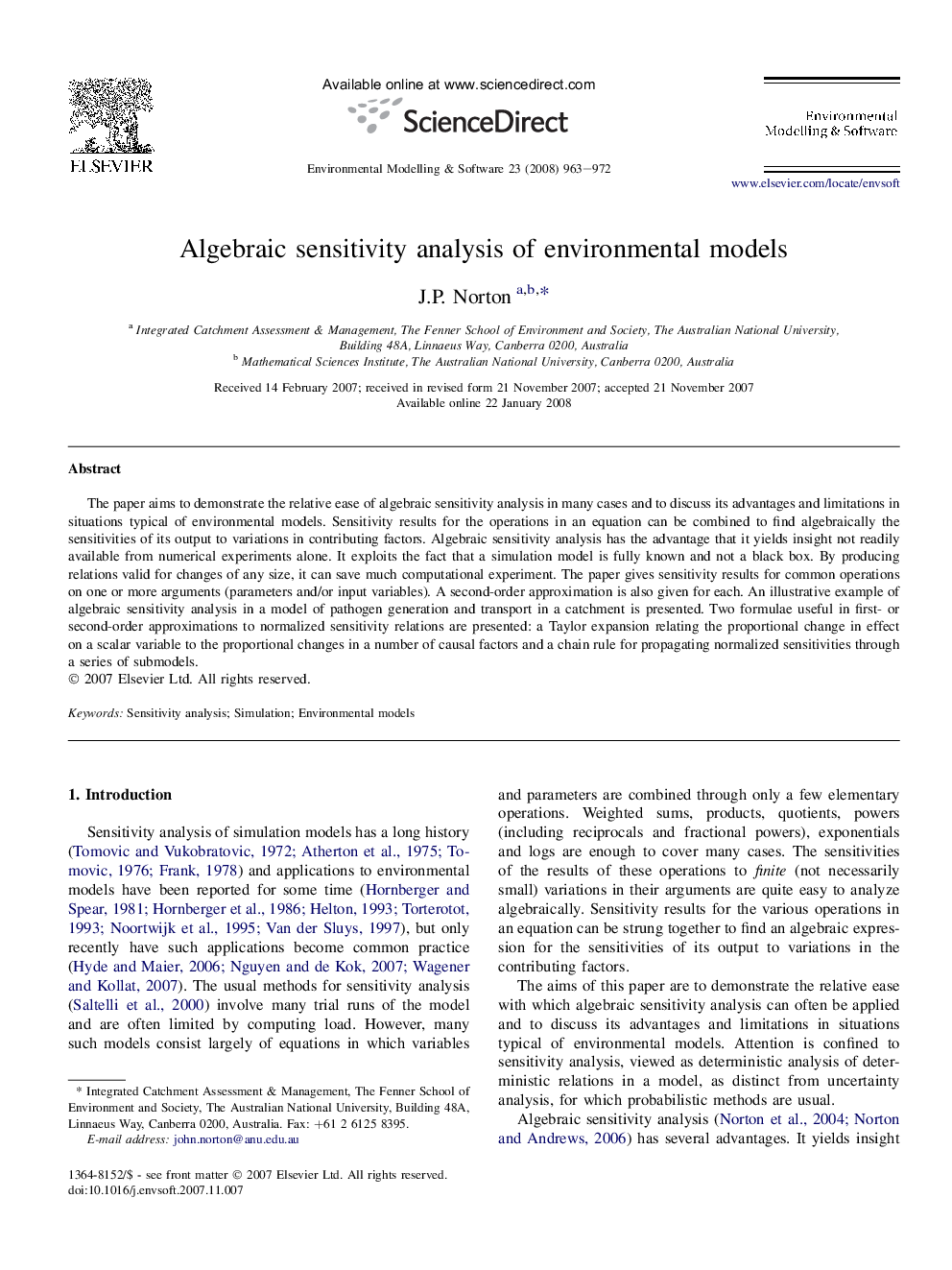| Article ID | Journal | Published Year | Pages | File Type |
|---|---|---|---|---|
| 570356 | Environmental Modelling & Software | 2008 | 10 Pages |
The paper aims to demonstrate the relative ease of algebraic sensitivity analysis in many cases and to discuss its advantages and limitations in situations typical of environmental models. Sensitivity results for the operations in an equation can be combined to find algebraically the sensitivities of its output to variations in contributing factors. Algebraic sensitivity analysis has the advantage that it yields insight not readily available from numerical experiments alone. It exploits the fact that a simulation model is fully known and not a black box. By producing relations valid for changes of any size, it can save much computational experiment. The paper gives sensitivity results for common operations on one or more arguments (parameters and/or input variables). A second-order approximation is also given for each. An illustrative example of algebraic sensitivity analysis in a model of pathogen generation and transport in a catchment is presented. Two formulae useful in first- or second-order approximations to normalized sensitivity relations are presented: a Taylor expansion relating the proportional change in effect on a scalar variable to the proportional changes in a number of causal factors and a chain rule for propagating normalized sensitivities through a series of submodels.
